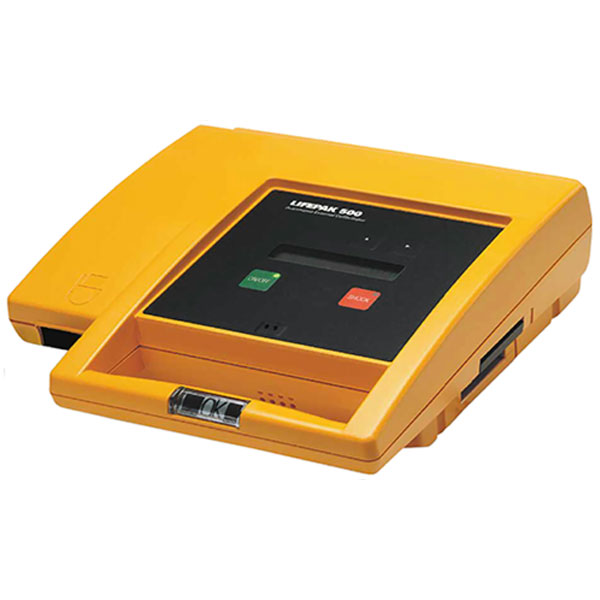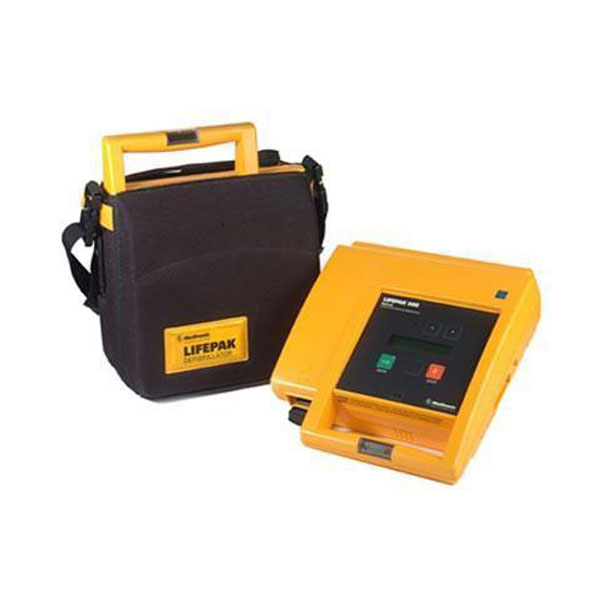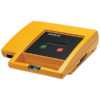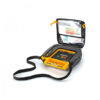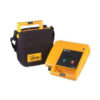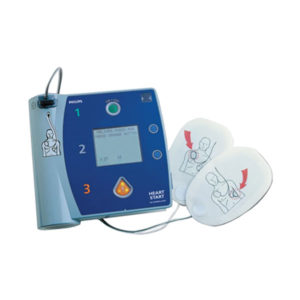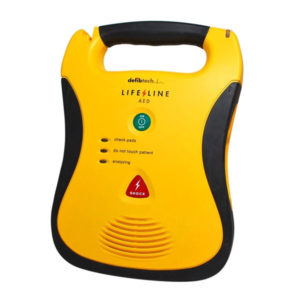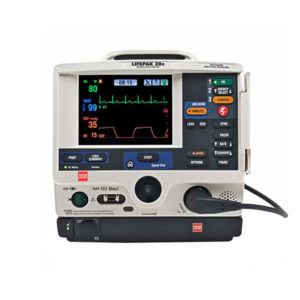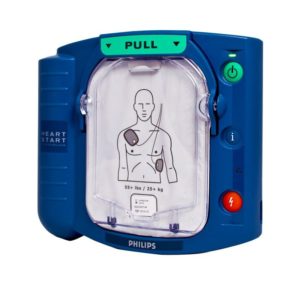Physio Control Lifepak 500
Certified Refurbished Medical Equipment!
The Physio-Control Lifepak 500 is designed to be used by first responders in cardiac emergencies. The Physio-Control Lifepak 500 AED determines which shock is right for the individual and ensures safe and simple delivery for widespread deployment. Its lightweight design is perfect for grab-and-go portability. It weighs just 7 pounds and features the ADAPTIV Biphasic technology waveform.
$924.35
Physio-Control Lifepak 500 Features
The Physio-Control Lifepak 500 is designed to be used by first responders in cardiac emergencies. The Physio-Control Lifepak 500 AED determines which shock is right for the individual and ensures safe and simple delivery for widespread deployment. Its lightweight design is perfect for grab-and-go portability. It weighs just 7 pounds and features the ADAPTIV Biphasic technology waveform.
Simple 2 or 3 button operation
Low maintenance
Durable
Powerful
User-friendly
Physio-Control Lifepak 500 Specifications
Dimensions
Height: 4” (10.2 cm)
Width: 10.5” (26.7 cm)
Depth: 11.6” (29.5 cm)
Weight: Monophasic: 6.2 lbs (2.8kg); Biphasic: 5.3 lbs (2.4 kg) (Without batteries)
Defibrillator
Input: ECG via QUIK-COMBO or FAST-PATCH disposable electrodes. Standard placement (anterior – lateral).
Electrical Protection: Input protected against high voltage defibrillator per IEC 60601/EN 60601.
Waveform: Monophasic pulse (Edmark) per AAMI DF2-1989, 3.2.1.5.1. Biphasic truncated exponential, with voltage and duration compensation for patient impedance.
Output Energy Sequence: Monophasic: 200, 200, 360 joules (360 joules thereafter) or 200, 300, 360 joules (360 joules thereafter).
Biphasic: three levels, user-configurable from 200 to 360 joules, delivered (level 1, level 2, level 3, level 3 …).
Charge time: With a new, non-rechargeable battery pack, or a new fully charged rechargeable battery pack: 200 joules in less than 9 seconds, 360 joules in less than 15 seconds.
Controls: ON/OFF – turns device power on or off. ANALYZE (optional) – starts ECG analysis. SHOCK – delivers defibrillation energy. Active only when the shock advisory system advises defibrillation.
Clock Set: Two switches are provided to set the clock.
Display: Two-line, 20-character per line dot-matrix liquid crystal display.
Low Battery Indicator: Low battery icon: at least 11 discharges remaining with a non-rechargeable battery pack. At least 6 discharges remaining with a rechargeable battery pack.
Service Indicator: Service icon.
Displayed Messages: Prompt user through a complete operating sequence.
Audible Tones: Coded tones assist the user through device operation and alert operator of display messages.
Voice Prompts prompt user through complete operation sequence.
Event Documentation
Type: Internal digital memory.
Memory Capacity: 20 minutes of audio recording (optional). ECG and event log of operator/device
Actions: At least 20 minutes if a unit is configured with audio recording and audio recording setup option is ON. At least 80 minutes if configured with audio recording and setup option is OFF. At least 60 minutes if not configured with audio recording.
Report type: CODE SUMMARY report, Event Log report, and Test Log report.
Capacity: 300 Event log events. 30 Test Log device tests (assuming no fault codes).
Data Review: LIFENET system compatible.
Batteries
Rechargeable SLA Battery Pak – Type: Sealed lead-acid, 8V, and 2.5 amp-hours.
Capacity: Typical: 59 full discharges or 3 hours of ON time with a new fully charged battery.
Minimum: 43 full discharges with anew, fully charged battery.
Battery Charge Time: 10 ± 1 hour. Battery charging limited to +15° to +35°C (+59° to +95°F).
Recommended Replacement Interval: 2 years or 200 battery charge/discharge cycles, whichever comes first using recommended battery maintenance procedures.
Weight: 1.9 lbs (0.9kg).
Non-rechargeable Lithium Battery Pak – Type: sealed lithium, 12V, and 7.5 amp-hours.
Capacity: typical: 312 full discharges or 14 hours of ON time.
Minimum: 230 full discharges with anew battery.
Shelf life: 5 years (4 years for aircraft use).
Weight: 1.2 lbs (0.5 kg)
Environmental
Operating Temperature: 0° to 50°C (+32° to +122°F).
Storage Temperature: -30° to +65°C (-22° to +149°F) without battery and electrodes. -30° to +65°C (-22° to +149°F) with battery and electrodes, maximum exposure time-limited to one week.
Atmospheric Pressure: 760 to 429mmHg (0 to +15,000 ft above sea level).
Relative Humidity: 10 to 95% (non-condensing).
Water Resistance: IEC 60529/EN 60529 IPX4 “Splash-proof” with electrodes or connector cover installed.
Shock: MIL-STD-810E, Method 516.4, Procedure 1 (40g, 6–9ms pulse, 1/2 sine each axis).
Vibration: MIL-STD-810E, Method 514.4, Helicopter—Category 6 (3.75 g RMS) and Ground Mobile—Category 8 (3.15 g RMS).
RTCA/DO-160C, Table 8–2 Fixed Wing—Turbojet Engine Classification C’ (Fuselage). Test level per Figure 8–5 C’. One hour in each of three axes.
Aircraft: RTCA/DO-160D, “Environmental Conditions and Test Procedures for Airborne Equipment,” Section 21, Category M, (Radiated Emissions).

